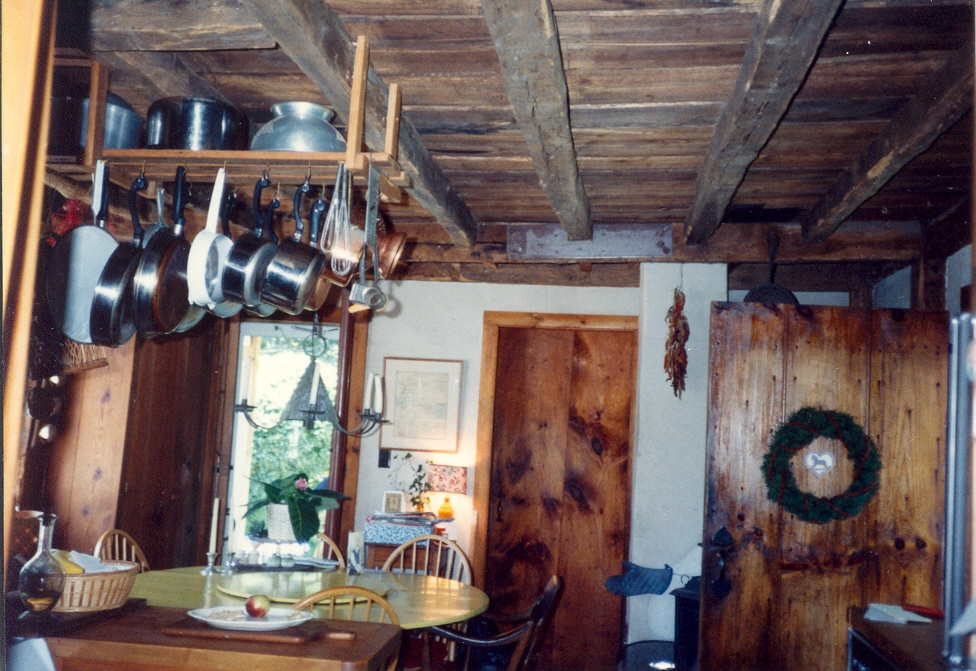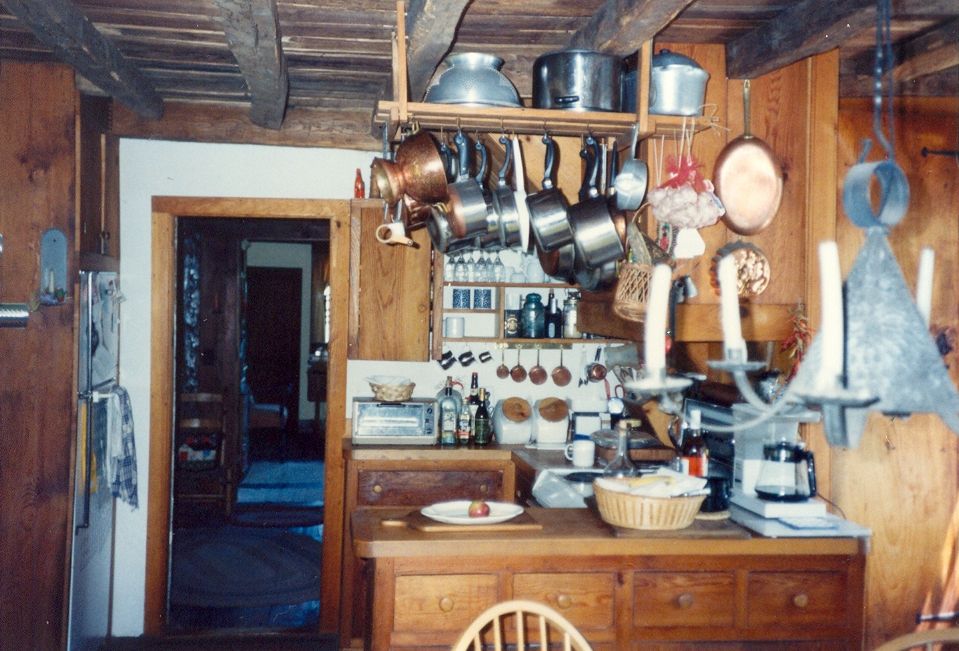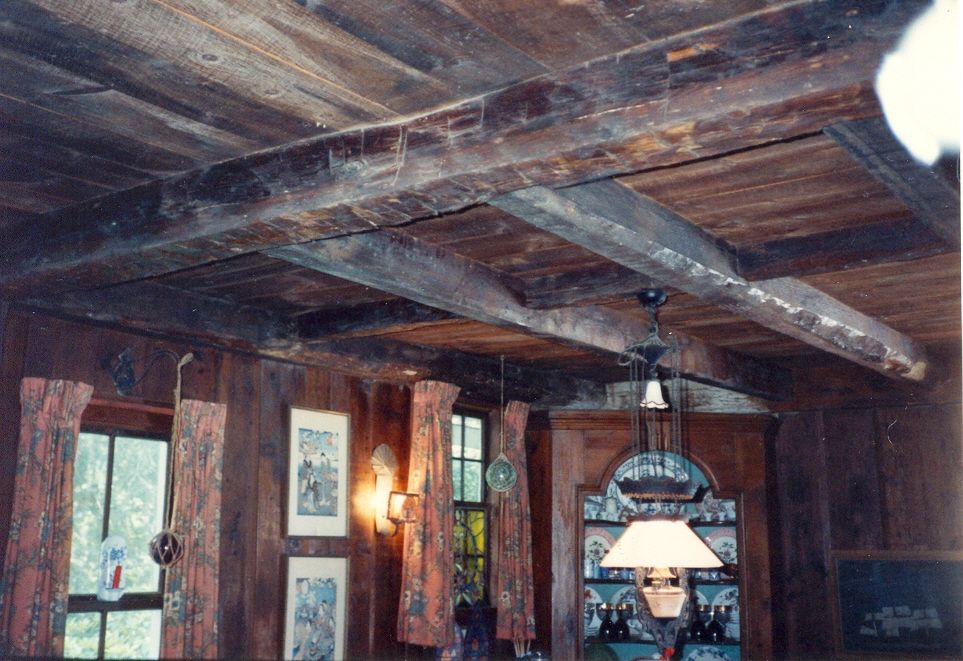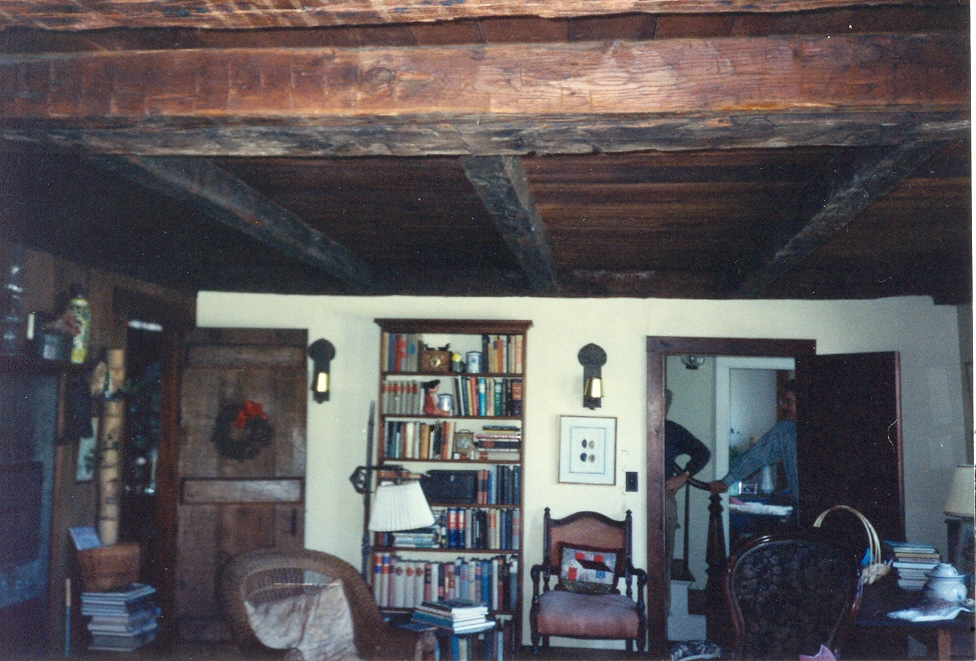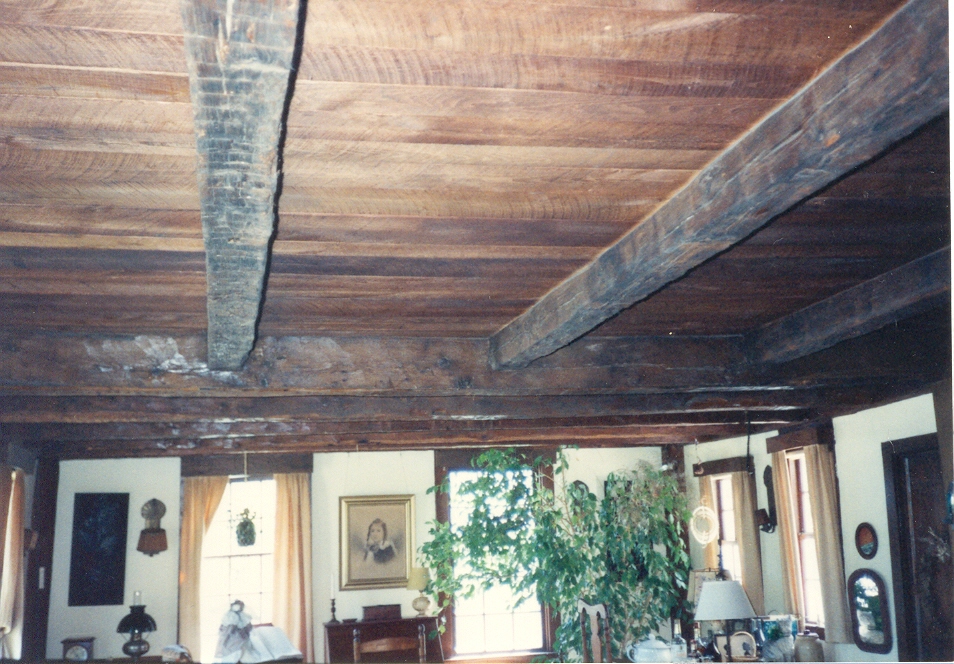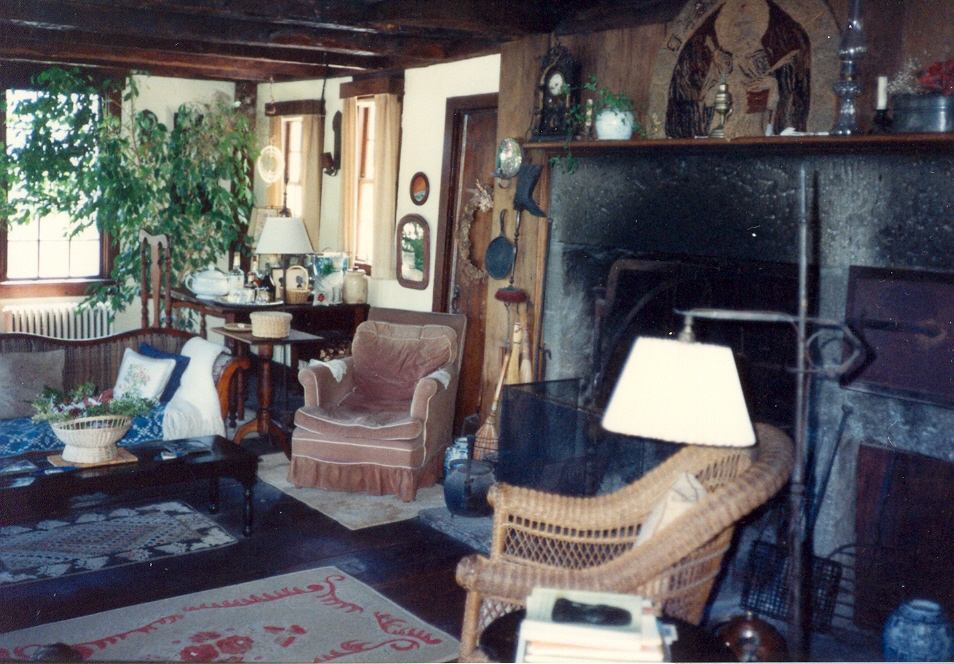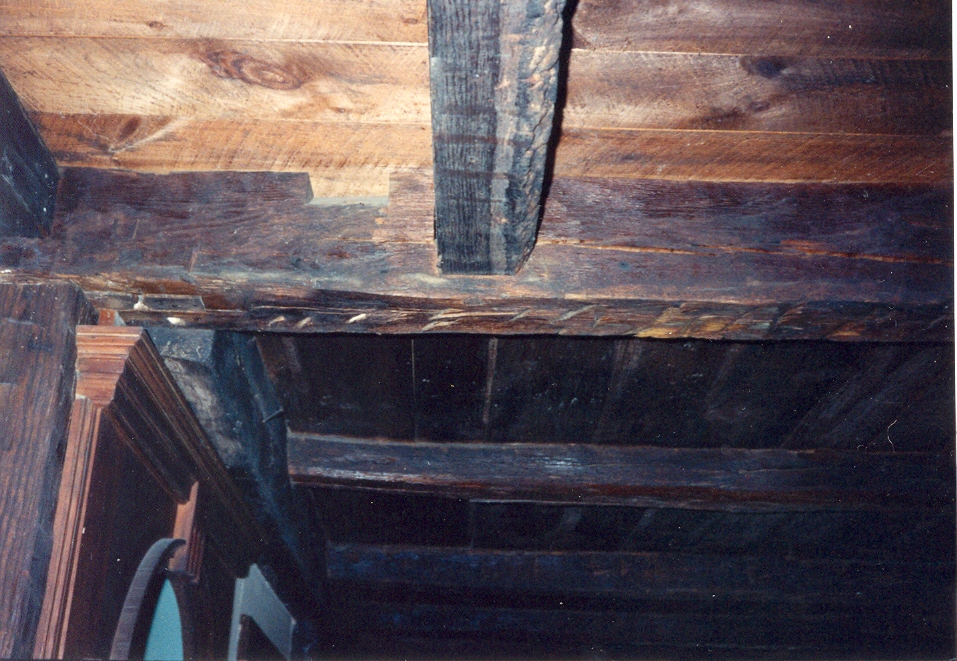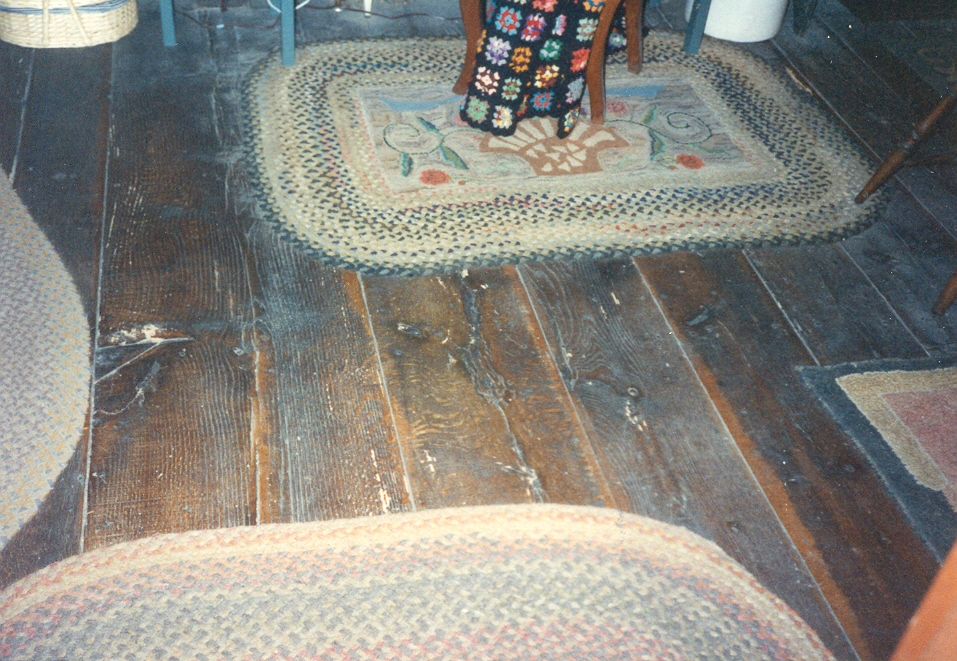THE DEAKE/UTTER HOUSE
HOPKINTON, R.I.
In the Historical
Register Town of Hopkinton, R.I. is a house with the identification of the Deake/Utter
home. It is believed to be the earliest of homes in this town, built in the early
part of the eighteenth century. The house dates back to the time when many houses
had a wall (usually the north side) made of a huge chimney and fireplace. The
entire house consisted of one large room and a small loft. Successive owners added
rooms as needed so that there are now seven rooms in this house. The foundation
of the original chimney still lies under the floor.
 While
it is not known which Deake descendent built this house, it is known that George
Deake owned 63 acres in the area of what is now the village of Hopkinton. His
Will indicates a house was on this land at the time of his death in 1746. The
land was divided between his three sons in 1757 as a condition of George's Will.
His son Charles Deake purchased all of the original George Deake land from the
other two brothers. In 1762, Charles provided a right of way through this land
to build the "Noose Neck Road". On July 31, 1766, Charles Deake sold the home
and land to Abram Utter but Charles continued to live in the Hopkinton area
until 1775 when he moved to Washington Co., N.Y.
While
it is not known which Deake descendent built this house, it is known that George
Deake owned 63 acres in the area of what is now the village of Hopkinton. His
Will indicates a house was on this land at the time of his death in 1746. The
land was divided between his three sons in 1757 as a condition of George's Will.
His son Charles Deake purchased all of the original George Deake land from the
other two brothers. In 1762, Charles provided a right of way through this land
to build the "Noose Neck Road". On July 31, 1766, Charles Deake sold the home
and land to Abram Utter but Charles continued to live in the Hopkinton area
until 1775 when he moved to Washington Co., N.Y.
Mr. and Mrs. Silk, the
current owners of the home, indicated an unmarked grave was found in a field
behind the house several years ago. While there are several very old cemeteries
in the area no grave for George or Richard Deake have been identified.
Abram Utter plied his trade
of cabinetmaker until his death in 1813. The land was conveyed to John Utter on
July 22, 1800 (son of Abram Utter). Abram Utter was buried on his farm, north
of the house. His stone stood in an open field but has since been moved. Here
also was buried Ester (Saunders) Utter, first wife of John Utter. There was an
Utter family cemetery behind the home which was moved in 1955 to the River Bend
Cemetery (WY008) in Westerly.
On June 18, 1816, John Utter
sold the property, including house and "joiners shop", to Amos Greene. On March
3, 1820 Amos Green deeded the land and house to Benjamin Greene, Jr. The Utter's
moved to New York State some time before 1810. On March 21, 1828, Benjamin Greene
deeded the house and 12 acres to Jesse Brown and on September 15, 1828 Jesse Brown
deeded the house to Reuben Brown. These families all continued in the cabinet
making business. Reuben was a furniture and coffin-maker, those trades being combined
in those days, but also was the local undertaker.
In 1860, Reuben Brown bought
the piece of land where Abram Utter's joiners shop and the old abandoned, 1828
school house stood. This land was located across from the Deake-Utter house, between
the intersection of North Road and the turnpike. Here Reuben had what he called
his "coffin shop" where he stored his surplus stock, little hearse and other equipment.
In the late 1800's, Reuben's
son Willard Brown was postmaster for the village of Hopkinton in the little shop
beside the house. He also repaired watches and sold novelties there. In 1925,
Ralph Sisson purchased the house and ran an antique business in Willard Brown's
old post office building. Mr. Sisson spent much time researching the history of
the house and devoted himself to it's restoration. Some time after 1925, a Mrs.
Allen who was in her nineties told him a legend about the house, a descendent
of General George Thurston and local historian, which indicated the house was
built by one of two Deake brothers. They were "pressed sailors" who had jumped
ship in Providence, R.I., fled into the woods of Hopkinton and settled there.
These two brothers were George and Richard Deake. George either built the house
in the early 1700's or it could have been built by his son Charles Deake in the
mid-1700's. Since the "one ender" style was not popular after the very early 1700's
the house was more than likely build by George Deake.

Thurman and Doris Silk currently own the house. They also owned the old General
Thurston home across the street and have converted it into a bed and breakfast
lodging. General George Washington was said to have stayed in this house as
a guest of General Thurston some time after the Revolutionary War.
PHOTOS INSIDE
DEAKE HOUSE
NOTE THE HAND CUT CEILING BEAMS
(IMAGINE OUR ANCESTORS CUTTING THESE BEAMS WITH AN AXE)
AN OLD CEMETERY NEAR THE DEAKE
HOME
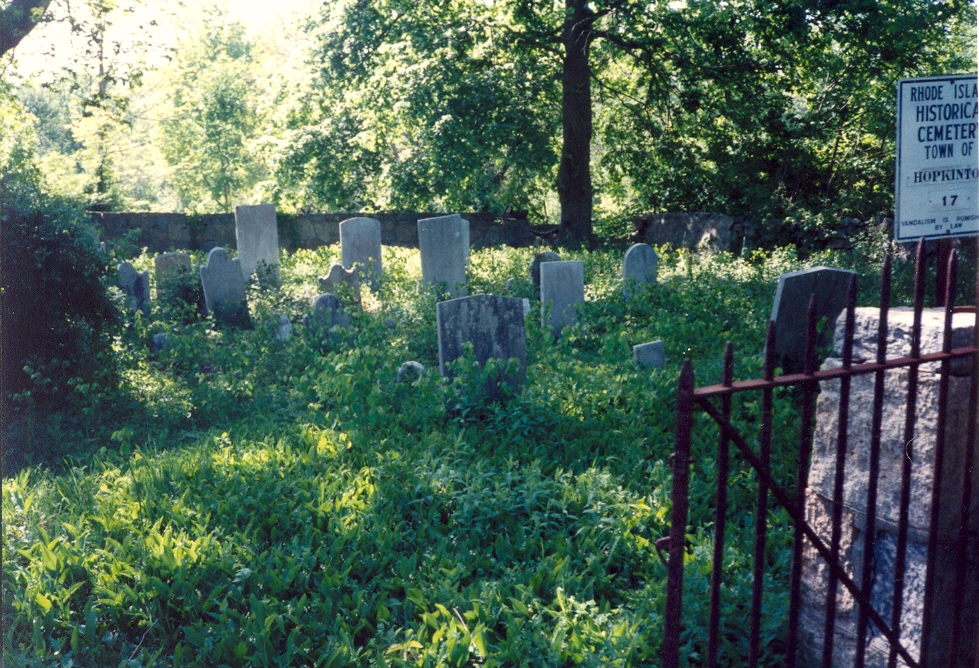
 While
it is not known which Deake descendent built this house, it is known that George
Deake owned 63 acres in the area of what is now the village of Hopkinton. His
Will indicates a house was on this land at the time of his death in 1746. The
land was divided between his three sons in 1757 as a condition of George's Will.
His son Charles Deake purchased all of the original George Deake land from the
other two brothers. In 1762, Charles provided a right of way through this land
to build the "Noose Neck Road". On July 31, 1766, Charles Deake sold the home
and land to Abram Utter but Charles continued to live in the Hopkinton area
until 1775 when he moved to Washington Co., N.Y.
While
it is not known which Deake descendent built this house, it is known that George
Deake owned 63 acres in the area of what is now the village of Hopkinton. His
Will indicates a house was on this land at the time of his death in 1746. The
land was divided between his three sons in 1757 as a condition of George's Will.
His son Charles Deake purchased all of the original George Deake land from the
other two brothers. In 1762, Charles provided a right of way through this land
to build the "Noose Neck Road". On July 31, 1766, Charles Deake sold the home
and land to Abram Utter but Charles continued to live in the Hopkinton area
until 1775 when he moved to Washington Co., N.Y. 
